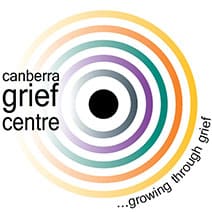The act of breathing tells us we are alive. Breath fuels our organs for life, our muscles for movement and our brain for practically everything! And yet, for many of us, the noise and pace of modern living, has us breathing irregularly, inefficiently and unappreciatively. Modern stress works the body persistently harder than it was ordinarily designed for. Add to this the stress and impact of grief and the ripple effect ensues: an activated sympathetic nervous system causing irritability, anxiety, body tension and aches, decreased concentration, negative bias and critical thinking, fatigue/exhaustion to name but a few symptoms.
For the most part, the breath is an autonomic process (occurs without conscious thinking). However, the magic of breath is such that we can also consciously connect with it in any given moment to activate deeper, diaphragmatic rhythm to stimulate relaxation and regulation of emotions. Using the breath to calm our nervous system (by activating the parasympathetic nervous system) is basic biology. Ancient traditional practices of yoga and meditation have long recognised and embraced the power of the breath to create inner equilibrium and improved health. By paying more attention to movements of the breath and practicing good technique (see below), we can transform habitual inefficient breathing to re-establish new, healthy rhythms.
Available are many websites to explain and demonstrate diaphragmatic breathing. Some basic principles:
1. Breathe out of your chest and into your belly. Take a normal breath in allowing your belly to relax and fall outward. Feel your diaphragm moving down, rib cage expanding.
2. Breathe out (exhale) slowly but deeply. Allow your belly to fall in, feel your diaphragm move up under your rib cage and your chest sink down.
3. Focus on a full exhale, allowing the body to inhale naturally.
4. If it helps and you have free hands, place one hand on the chest and one on the belly so you can feel your torso moving.
Another small inclusion to this sequence, is to pause for the count of three between breaths; at the top of our inhale (just before you transition to your exhale) and then at the bottom of your exhale (before you begin another breath).
Practice, practice, practice…..in the car, having a shower, preparing dinner…..until it becomes your new (but originally programmed) rhythm of breathing.

